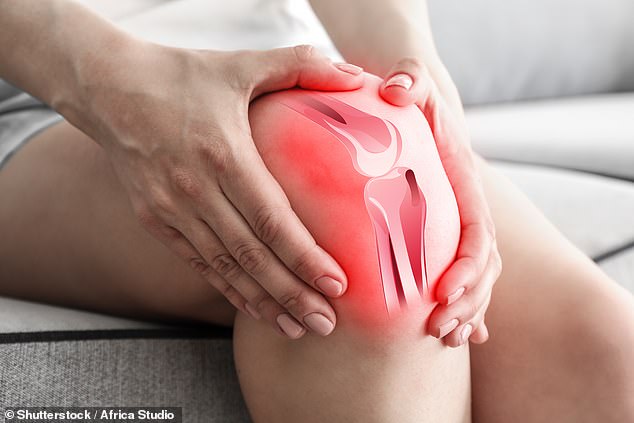For people who suffer from chronic knee pain, aerobic exercises such as walking, cycling and swimming could be the best for relieving pain and boosting quality of life, new research has suggested.
According to the National Institute for Health and Care Excellence, almost half of over-50s have experienced knee pain, leaving many sufferers relying on painkillers long term.
And nearly 30 per cent of people over the age of 45 show signs of knee osteoarthritis, half of who also have severe knee symptoms—and don’t know which types of exercises could benefit them due to ‘ambiguous’ guidelines.
But now, researchers at the British Medical Journal (BMJ) have filled the gap in current guidelines, proving that aerobic exercises are likely the best treatment option in terms of exercise therapies for osteoarthritis sufferers.
Osteoarthritis occurs when the protective cartilage at the ends of bones wears away over time, causing pain, swelling and inflammation, and eventually restricting range of movement.
Whilst almost any joint can be affected, the condition most often causes problems in the knees—with 100,000 people a year ending up on the NHS waiting list for joint replacement surgery.
As such, the researchers are now urging practitioners to: ‘Recommend aerobic exercise as a first line intervention for knee osteoarthritis management, particularly when the aim is to improve functional capacity and reduce pain.’
In the study, published by The BMJ, researchers looked at the results from 217 trials, published between 1990-2024 involving over 15,680 participants that compared aerobic, flexibility, strengthening, mind-body, neuromotor and mixed exercises with a control group.

Around 5.4 million people in the UK have osteoarthritis of the knee, which occurs when the body can no longer maintain the joint to keep it healthy and pain free
In order to assess how effective the different types of exercises were, the researchers focused on pain, function, gait performance and quality of life—which were assessed at four, 12, and 24 weeks after starting treatment.
Overall, aerobic exercise consistently showed the highest probability of being the best treatment course for people suffering from chronic knee pain.
The results showed, with moderate certainty, that aerobic exercises were effective in alleviating short and mid-term pain, gait performance—which refers to walking patterns—and quality of life.
This type of exercise was also found to improve short term, mid term and long term function compared to controls.
However, the researchers noted: ‘None of the exercises resulted in more adverse safety events than the control group, suggesting that exercise therapy is a safe treatment approach.’
They added: ‘While other exercises may offer complementary benefits to patients, they should not replace aerobic exercise as the primary strategy.
‘Patients should engage regularly in structured aerobic activities, such as walking, cycling or swimming to optimise symptom managing.’
Whilst the researchers acknowledged that aerobic exercises won’t be accessible to everyone, they stressed that alternative forms of structured physical activity should be implemented, with the help of healthcare professionals, to help manage pain effectively.

The researchers said that aerobic exercises—such as running, swimming and cycling—should be recommended as a first line treatment for knee osteoarthritis
The team hope that future research will take into consideration their findings and focus on disease severity to help clinicians make more informed choices regarding exercise therapy for patient with knee osteoarthritis.
Other effective treatment options include eating a balanced diet, high in protein, whole grains, fish and olive oil—known as the Mediterranean diet—taking anti-inflammatory supplements like turmeric and acupuncture.
Experts say the diet’s anti-inflammatory properties can help soothe swollen joints, while also protecting heart health and supporting weight control—two key risk factors for arthritis.
Whilst evidence for acupuncture—which involves inserting needles into specific points in the body—is mixed, a recent review of 18 studies involving 14,000 people found acupuncture was effective in reducing pain and improving function in osteoarthritis. Other research has shown modest short-term benefits.
Joint replacements can be considered for long term relief for those with very advanced osteoarthritis, but NHS waiting lists are often long and people face many years in pain.
This article was originally published by a www.dailymail.co.uk . Read the Original article here. .

